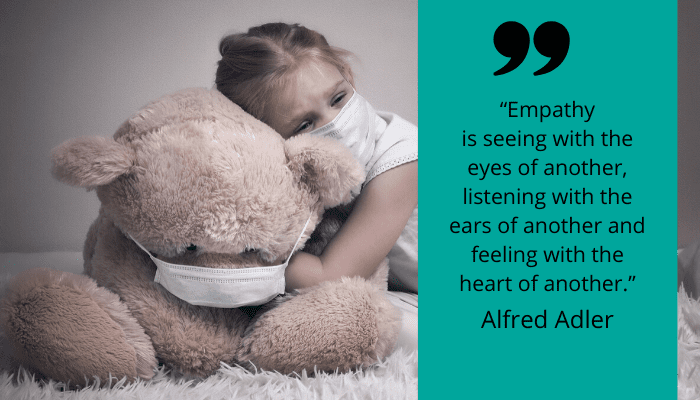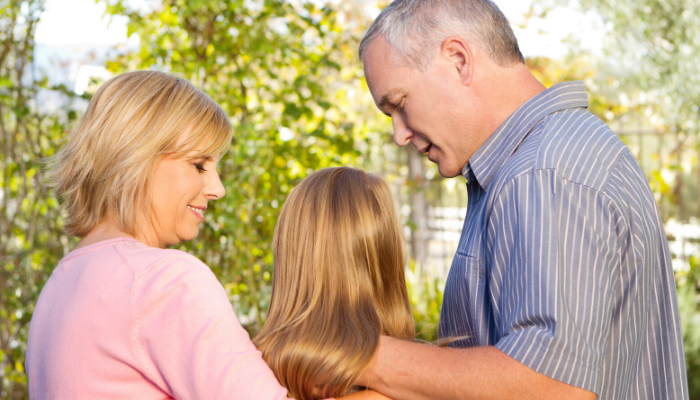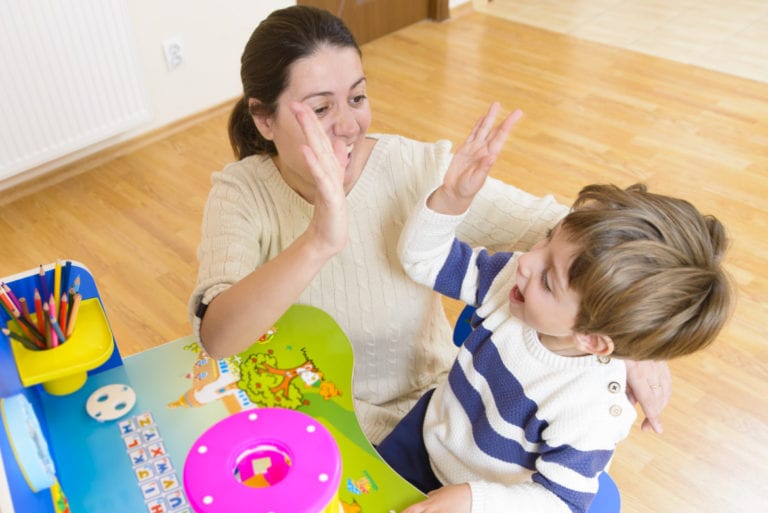7 Helpful Tips to Teach Kids Compassion and Empathy
Disclosure: This post may contain affiliate links, meaning I may get a small commission if you decide to make a purchase through my links, at no cost to you.

Compassion and Empathy are core attributes that I believe are essential for prosperous relationships and successful social connections. None of us was born with compassion and empathy.
We were pretty selfish little humans screaming our dimpled heads off the instant we were uncomfortable. Perfectly content as long as our tummy was full, our diaper was clean, and we were snuggling up close to a warm and loving body. Then if anything was amiss, more hysteria would ensue until we got our way again.
Slowly, ever so slowly, we as toddlers learned that the world had other people taking up space in our universe. We must share. The horror. A neighbor girl cried when you smacked her for ripping the treasured doll from your hands. You were probably scolded for that injustice. It was all so confusing!
As we get older, we all learn to choose happiness by giving and sharing more than we take, even if we really don’t want to. Yes, you can have the last raspberry filled donut. That is usually where the road ends for a few people.
For those of you who have lived, even a minute, in the trenches of rejection and despair, whose mother died too soon, who was picked last when teams were chosen for the 6th grade kickball game, when you stayed home alone on prom night. That pain has given you a unique opportunity to not only learn to be compassionate and empathetic, but to actually live in compassion and empathy.
The dictionary defines compassion as sympathetic pity and concern for the suffering or misfortunes of others. Empathy, on the other hand, goes a step further as the ability to understand and share the feelings of another.
This, my favorite quality in people, can be tricky to learn for even the kindest of people, for toddlers…nearly impossible. However, as with all good things in life, learning compassion and empathy requires effort, practice, a little bit of creativity, and on occasion, a large piece of humble pie.

The founder of the school of individual psychology, Alfred Adler, said, “Empathy is seeing with the eyes of another, listening with the ears of another and feeling with the heart of another.”
Is there a right time to start teaching kids compassion and empathy? How do we do it? Are there creative ways to help our kids learn the importance of compassion and empathy? Can we teach our kids to empathize to the point where they become overwhelmed?
Parents who practice positive parenting wrestle with these types of questions every day. Good news, every child born has the capacity to empathize and learn to understand others feelings without being overwhelmed by them. You as a parent, have everything you need to recognize and cultivate empathy in your own children.
Any parent who shows compassion and knows how to be kind has already formed a solid foundation to teach their children empathy.
Here are 7 Tips to teach your child the art of compassion and empathy:

1. Help kids to recognize emotions. Helping your kids to recognize, differentiate and name emotions is important to future compassion and empathy: “Why are you crying?” “I am crying because sister hit me.” “Are you crying because sister hit you or are you crying because you are sad that sister hit you?” Or “Why did you just slam the door shut?” “Because you took my phone away.” “Did you slam the door because I took your phone or because you are mad that I took your phone?”
Children have no way of being compassionate or empathizing with the feelings they can’t explain. By naming and helping point out emotions you think your child is feeling, as well as those feelings you have, you will stimulate and help your child develop emotional intelligence.
2. Teach kids to interpret various feelings. In everyday life, talk about the feelings of people in your immediate vicinity, in television, or while reading a book. In the book, Alexander and the Terrible, Horrible, No Good, Very Bad Day. You can ask your kids about the feelings of Alexander and what actions he took because of his feelings. Take a pause and think about why he had a bad day and how it affected other people in his life. What can we consider before we act on our own feelings?
3. Inspire kids to find similarities. We may never have broken our arm while doing parkour, but we may have fallen off of the trampoline and twisted our ankle. We know both hurts like Hades. Finding similar experiences will help us relate to others.
Ignite a curiosity in your children about the characteristics and experiences that they have in common with others. What does an older man who has lived on a farm all of his life have in common with a 6-year-old who lives in a city? Did they both go to school? Do they both have a sister who is a pain in the neck sometimes? There you go.

4. Encourage stories and organize role playing. Compassion and empathy is more than just talking about our emotions and relating to other people. It means learning to see another person’s perspective as well and trying to feel what it is like being in their shoes. Image what it is like to have to skip a meal because there is no food in the house.
Fictional as well as real-life stories offer excellent opportunities for teaching compassion and empathy. Discuss a story of your ancestor who lived through The Great Depression or someone you are reading about in the news today and focus on the circumstances and emotions of that hero.
Simulate common difficulties and life challenges with your kids. Like the time you struggled with a difficult friend who cheated on your test and got you sent to detention. Your kids can then perceive how they feel playing that role and in turn help them understand you and other people better.
5. Recognize facial expressions. We can’t read people’s minds, but sometimes we can understand them from their facial expression and body language. When someone is crying, obviously they are upset or emotional about any number of things. Toddlers usually misinterpret facial expressions. When you are at a park, point out the little red-faced boy, throwing dirt at an invisible person, or the little girl smiling and laughing on the slide. Compassion and Empathy requires paying attention to different emotions.
6. Share emotions after a conflict. Sister took the last brownie that was saved for you. Dad got mad because someone tracked mud on the seat of his truck.
When the conflict is over, and everything is somewhat calm and peaceful, talk to your kids about everyone’s emotions. This will enhance everyone’s compassion and empathy as well as help everyone express their feelings and make adjustments.
7. See everyone as a friend. I have not always been a patient driver. There are still times when I get upset when I am cut off by a selfish driver. Occasionally I will freak out when I use my blinker to change lanes and the cars in that lane don’t let me in. I learned that perhaps I need to be more compassionate empathetic to these people. I decided to start calling everyone on the road my “friends”.
I knew that my friends would not purposely cut me off. I began to see these people as true friends that must not have seen me or that maybe they were actually trying to let me in.
It isn’t a perfect system, especially when someone honks or gives me the bird. My friends don’t act like that. But I have become more patient none the less.
Please comment below to share your experience with compassion and empathy. We would love to hear about it.
Related Reading:
Develop Listening Skills in Your Kids
Help Your Kids Be More Relaxed
GET FREE ACCESS TO OUR LIBRARY OF FREE PRINTABLES AND RESOURCES!
Enter Your Name and Email for FREE Access to our Library of FREE Home and Family Printables Series!





